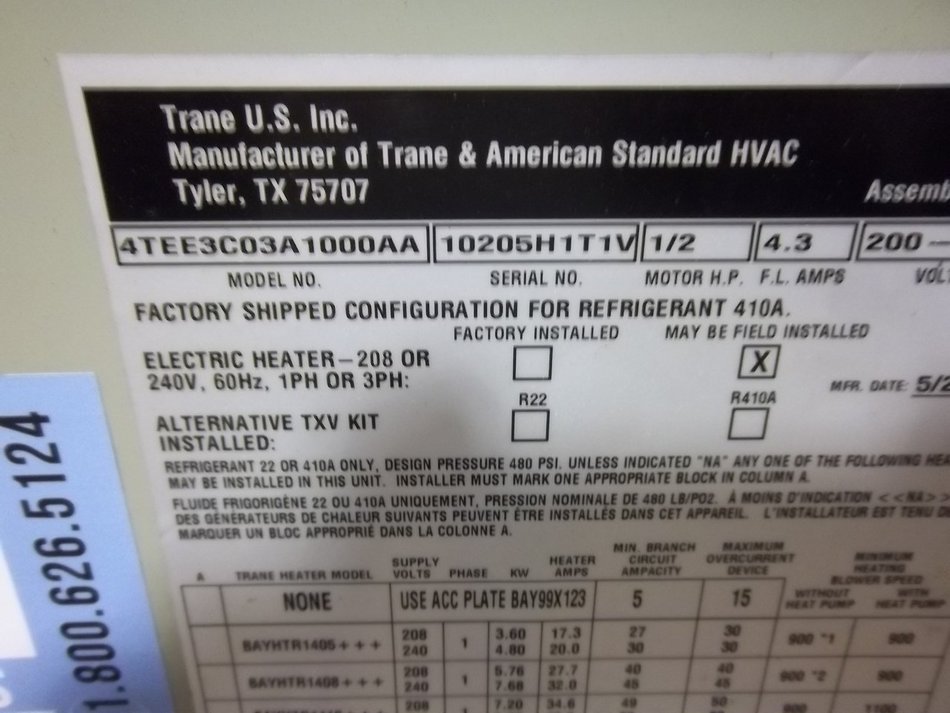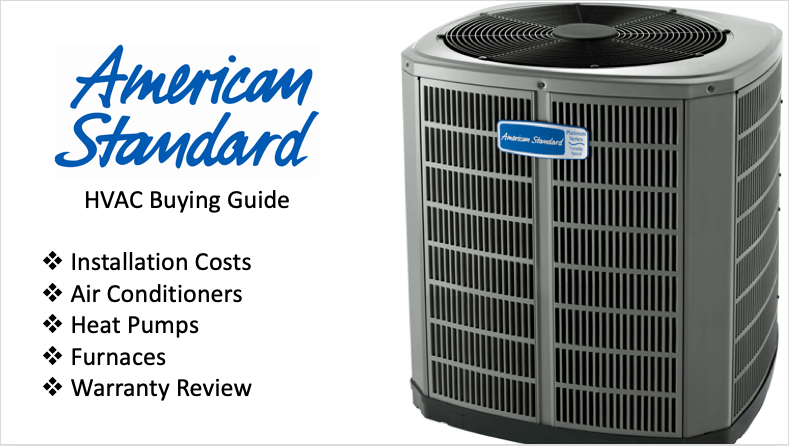American Standard Air Handler Manual Pdf

An American Standard air handler is a crucial component of your home's heating and cooling system. It works in conjunction with either an air conditioner or a heat pump to circulate conditioned air throughout your house. This guide provides a comprehensive overview of air handlers, focusing on understanding manuals, key features, maintenance, troubleshooting, and how to make informed decisions about their use.
Understanding Air Handler Basics
Before diving into manuals, it's essential to understand what an air handler does. Simply put, an air handler is the indoor unit of your HVAC (Heating, Ventilation, and Air Conditioning) system that contains a blower fan, a cooling coil (or heating coil in the case of a heat pump), and air filters. It circulates air throughout your ductwork, distributing either cool or warm air as needed to maintain your desired indoor temperature.
Think of the air handler as the "lungs" of your HVAC system. It takes air in, conditions it, and then pushes it out to your home.
Key Components Explained:
- Blower Fan: The blower fan is the engine that drives the air circulation. It pulls air from your return ducts, passes it through the cooling or heating coil, and then pushes it out through your supply ducts. Different types of blower motors exist (e.g., multi-speed, variable-speed, ECM), each offering varying levels of efficiency and noise.
- Cooling/Heating Coil: The coil contains refrigerant (in the case of an air conditioner) or a heating element (in the case of a heat pump operating in heating mode). Refrigerant, think of it as the "blood" of your AC system, carrying heat from inside to outside during cooling, or vice-versa during heating with a heat pump. As air passes over the coil, it's either cooled or heated.
- Air Filters: Air filters are vital for removing dust, pollen, and other particles from the air, improving indoor air quality and protecting the air handler's components from damage. Regular filter replacement is crucial.
- Electric Resistance Heaters: Many air handlers include electric resistance heaters as supplemental heating, especially in colder climates. These act like large toaster coils to provide immediate heat when the heat pump can't keep up or during defrost cycles.
Accessing and Understanding the American Standard Air Handler Manual PDF
The air handler manual PDF is your go-to resource for specific information about your particular model. It contains vital details about installation, operation, maintenance, and troubleshooting. Locating this manual is the first step.
Finding the Manual:
- Check the Unit: Look for a model number sticker on the air handler itself. This is typically located on the side of the unit, often behind an access panel.
- American Standard Website: Once you have the model number, visit the American Standard website (www.americanstandardair.com) and navigate to the "Support" or "Resources" section. Search for the manual using the model number.
- Google Search: A simple Google search like "[American Standard Air Handler Model Number] Manual PDF" can often yield direct links to the manual.
- HVAC Contractor: Your HVAC contractor may have a copy of the manual or be able to obtain it for you.
Decoding the Manual: Key Sections and Their Importance
Once you have the manual, familiarize yourself with its contents. Here are some critical sections to pay attention to:
- Product Specifications: This section details the air handler's technical specifications, including its capacity (measured in tons or BTU/h), electrical requirements, airflow rates, and dimensions. This information is crucial for ensuring proper installation and compatibility with your existing system.
- Installation Instructions: This section is primarily for HVAC professionals, but understanding the basics can help you ensure that your unit was installed correctly. Pay attention to clearances, wiring diagrams, and ductwork connections.
- Operating Instructions: This section explains how to operate the air handler in conjunction with your thermostat. It may cover fan speed settings, heating/cooling modes, and other features.
- Maintenance Schedule: This is perhaps the most important section for homeowners. It outlines the recommended maintenance tasks, such as filter replacement, coil cleaning, and blower motor lubrication. Following this schedule will help extend the life of your air handler and maintain its efficiency.
- Troubleshooting Guide: This section provides solutions to common problems, such as insufficient heating or cooling, unusual noises, or error codes displayed on the thermostat. Attempting basic troubleshooting steps can save you time and money by avoiding unnecessary service calls.
- Wiring Diagrams: Understanding the wiring diagrams, although primarily for technicians, can be helpful in diagnosing electrical issues.
- Warranty Information: Carefully review the warranty information to understand the coverage period and what is covered under warranty. Keep your purchase receipt and installation records for warranty claims.
Essential Maintenance for American Standard Air Handlers
Regular maintenance is key to keeping your American Standard air handler running efficiently and reliably. Here are some essential maintenance tasks you can perform:
- Filter Replacement: Replace your air filter regularly. This is the most important maintenance task. Depending on the type of filter and your indoor air quality, you may need to replace it every 1-3 months. A dirty filter restricts airflow, reducing efficiency and potentially damaging the blower motor.
- Coil Cleaning: Periodically inspect the cooling coil (or heating coil) for dirt and debris. A dirty coil reduces heat transfer efficiency. You can clean the coil yourself using a coil cleaner (available at most hardware stores), or you can hire a professional to do it.
- Blower Motor Inspection: Inspect the blower motor for dust and debris. Clean the motor with a soft brush or vacuum cleaner. Some blower motors require lubrication; consult your manual for specific instructions. Newer ECM motors are typically sealed and require no lubrication.
- Drain Pan Cleaning: The condensate drain pan collects moisture that condenses on the cooling coil. Over time, algae and mold can grow in the pan, clogging the drain line. Clean the drain pan with a bleach solution or specialized drain pan cleaner.
- Professional Inspection: Schedule an annual inspection by a qualified HVAC technician. The technician can perform a thorough inspection of the entire system, including the air handler, refrigerant lines, and electrical connections.
Troubleshooting Common Issues
Even with regular maintenance, problems can sometimes arise. Here are some common issues and potential solutions:
- Insufficient Heating or Cooling: Check the thermostat settings, air filter, and outdoor unit. Make sure the outdoor unit is not blocked by snow or debris. If the problem persists, call a qualified HVAC technician.
- Unusual Noises: Unusual noises, such as squealing, grinding, or rattling, can indicate a problem with the blower motor, fan blades, or other components. Turn off the unit and inspect for loose parts or obstructions. If you can't identify the source of the noise, call a technician.
- Air Handler Not Turning On: Check the circuit breaker to ensure it hasn't tripped. Also, check the thermostat batteries. If the problem persists, there may be an electrical issue requiring professional attention.
- Water Leaks: Water leaks can indicate a clogged condensate drain line. Clear the drain line using a wet/dry vacuum or a stiff wire. You can also pour a cup of bleach down the drain line to kill algae and mold.
- Error Codes on Thermostat: Consult your thermostat manual to interpret the error codes. Many error codes indicate specific problems with the air handler or outdoor unit.
Making Informed Decisions: Choosing the Right Air Handler
If you're considering replacing your existing air handler, here are some factors to consider:
- Capacity: The capacity of the air handler should be matched to the capacity of your outdoor unit (air conditioner or heat pump). An undersized air handler will not be able to deliver sufficient heating or cooling, while an oversized air handler can lead to short cycling and reduced efficiency.
- Efficiency: Look for air handlers with high-efficiency blower motors (e.g., ECM motors). These motors consume less electricity, saving you money on your energy bills.
- Features: Consider features such as variable-speed blower motors, which provide more consistent temperatures and improved dehumidification, and communicating systems, which allow for more precise control and diagnostics.
- Brand Reputation: American Standard is a reputable brand known for its quality and reliability. However, other brands also offer excellent air handlers. Research different brands and models to find the best fit for your needs and budget.
- Professional Installation: Proper installation is crucial for ensuring optimal performance and longevity. Choose a qualified HVAC contractor with experience installing American Standard air handlers.
Understanding Air Handler Variable Speed Technology
One of the most important advancements in air handler technology is the introduction of variable-speed blowers. Traditional air handlers have single-speed or multi-speed blowers, which operate at a fixed speed. Variable-speed blowers, on the other hand, can adjust their speed based on the heating or cooling demand. This offers several advantages:
- Improved Comfort: Variable-speed blowers provide more consistent temperatures throughout your home by continuously circulating air.
- Enhanced Dehumidification: At lower speeds, the blower removes more moisture from the air, improving indoor air quality and comfort, especially during humid months.
- Quieter Operation: Variable-speed blowers operate at lower speeds more often, resulting in quieter operation compared to single-speed blowers.
- Energy Savings: Variable-speed blowers consume less electricity than single-speed blowers, saving you money on your energy bills.
Safety Precautions
When working with your air handler, always take the following safety precautions:
- Turn off the power: Before performing any maintenance or troubleshooting, turn off the power to the air handler at the circuit breaker.
- Wear safety glasses: Protect your eyes from dust and debris.
- Avoid touching electrical components: If you're not comfortable working with electrical components, call a qualified HVAC technician.
- Follow the manufacturer's instructions: Always follow the instructions in your air handler manual.
By understanding the information in your American Standard air handler manual PDF and following these guidelines, you can keep your air handler running efficiently and reliably for years to come, ensuring a comfortable and healthy home environment.










